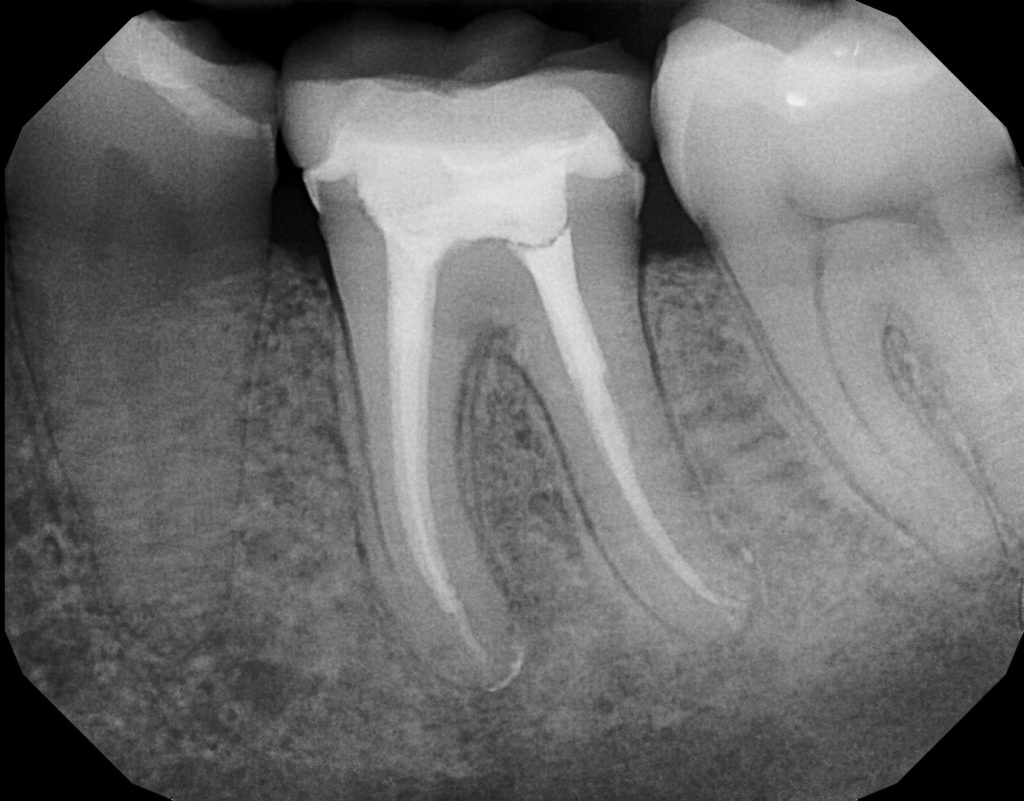Why do I need root canal treatment?
The tooth is made up primarily of three layers, the central pulp surrounded by dentine and this is covered by layer of enamel. The pulp in the middle is the part which senses sensations of hot/cold.
On a normal healthy tooth the pulp is happily encased in it’s protective coating of dentine and enamel but in cases of extensive dental decay the pulp is irritated causing pain, swelling and possibly an abscess.
Eventually the pulp dies off and this needs to be removed and filled to save the the tooth and eliminate the abscess – this process is root canal treatment.

What happens during a root filling?
During your root canal treatment appointment your dentist will firstly ensure you feel no discomfort by anaesthetising (numbing) the tooth.
To ensure that no bacteria from saliva enters the pulp (nerve) chamber of the tooth, a special protective barrier is placed over the tooth by your dentist. This special protective barrier (rubber dam) also stops any debris or dental materials entering you mouth, protects your airway and ensures a comfortable dental experience.
Your dentist will start to remove the infected pulp (nerves and blood vessels), cleaning and disinfecting the canals of the tooth, leaving the tooth free from decay and diseased tissue. During your dental appointment you may require radiographs (x-rays) to be taken to aid diagnosis and ensure all the decayed material has been removed.
Once your dentist is happy with the cleaning process, he/she will then fill up the canal space and place a restoration on the completed tooth.
Does it hurt?
Your dentist will anaesthetise the tooth sufficiently to ensure you feel no discomfort during your dental treatment. In some cases where the nerve has become necrotic (dead) you may not require anaesthesia, your dentist will inform you of this at your dental appointment and may require a radiograph (x-ray) to determine this.



